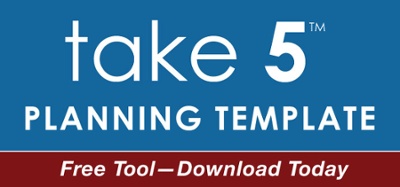
It’s a paradox that every leader faces: Create teams that work well together but embrace conflict. Also, drive consensus but encourage individual points of view. Discomfort is emotional. Feelings can be complex and multi-layered. But stifling expression can inhibit a team’s performance and lead to poor decision making.
It’s a given: Having tough conversations and communicating difficult topics is part of a leader’s job. But just like you plan for contingencies in your business, planning how you will communicate difficult messages can improve the ultimate outcome. It is seldom easy to share difficult news, but thinking through your approach in advance definitely can improve the process.
Go Toward the Conflict
It’s human nature to avoid conflict; we’re wired in that way. I was talking with a leader recently about conflict and how he avoided conflict, which he acknowledged cost him time, energy, and negatively impacted relationships with others.
The principle I share with leaders who avoid conflict is simply this: Go toward the conflict. Our natural tendency is to move away from it and avoid it. It’s only through what might feel like “rupture” that “repair” can happen. That’s the upside of conflict handled well—improved relationships and trust.
Handling tough conversations involves two aspects: Crafting a clear message and having the conversation.
Here are 6 steps to prepare:
Step 1: Identify the problem.
What’s the issue in the business? How are your results affected? Are there undesired behaviors that need to change?
Step 2: Identify your desired outcome.
What is your objective for the conversation? Are you trying to put business news in context for your employees? Do you need your team to understand changes that are under way? Do you need desired behaviors to become the norm among your staff?
Step 3: Identify your audience.
Who needs to hear this information? Do you need to inform you entire staff? Is it a small group? Is it one employee? And should they all hear the message at the same time, or should some people hear it before others?
Step 4: Structure your key messages/conversation.
What will you say to employees in a calm, constructive way so they understand the situation and your concerns?
- Consider how to start the conversation.
- Develop specific messages or even a script to deliver the key points.
- Identify the questions you will ask (to seek input/check for understanding). For example, “Tell me how you feel about what I just said.”
- Have stories or examples to share to illustrate your main point.
- Outline specific actions being taken and/or that your employees need to take.
Step 5: Deliver your message.
When it is time to deliver the message, select the right time and place to have a conversation with privacy and without distraction. Encourage dialogue so you can get real-time insight on how employees are receiving the information, what’s on their minds, and if they understand what you are saying. Allow for plenty of time to be sure they feel supported and listened to.
Step 6: Follow up.
Be sure to make yourself available to answer questions—in front of a group as well as privately. Ask what’s on their minds and listen with empathy to people’s concerns. Confirm next steps or expectations and timeline for completion, including any commitments you make to followup on their expressed concerns.
What type of conflicts do you address frequently?
—David Grossman
Click below to download a free tool—Take 5™ Planning Template—to map out your communication, whether it's to one person, a group or an organization. Being more purposeful in your communications can take as little as five minutes.
Tag(s):
Leadership Communication
Other posts you might be interested in
View All Posts
Leadership Communication
5 min read |
October 17, 2022
Leadership Communication: 6 Steps to Handling Tough Conversations
Read More
Leadership Communication
4 min read |
November 12, 2021
5 Proven Approaches to Leader Communications in the New Reality
Read More
Leadership Communication
5 min read |
July 19, 2021


Comments on this post